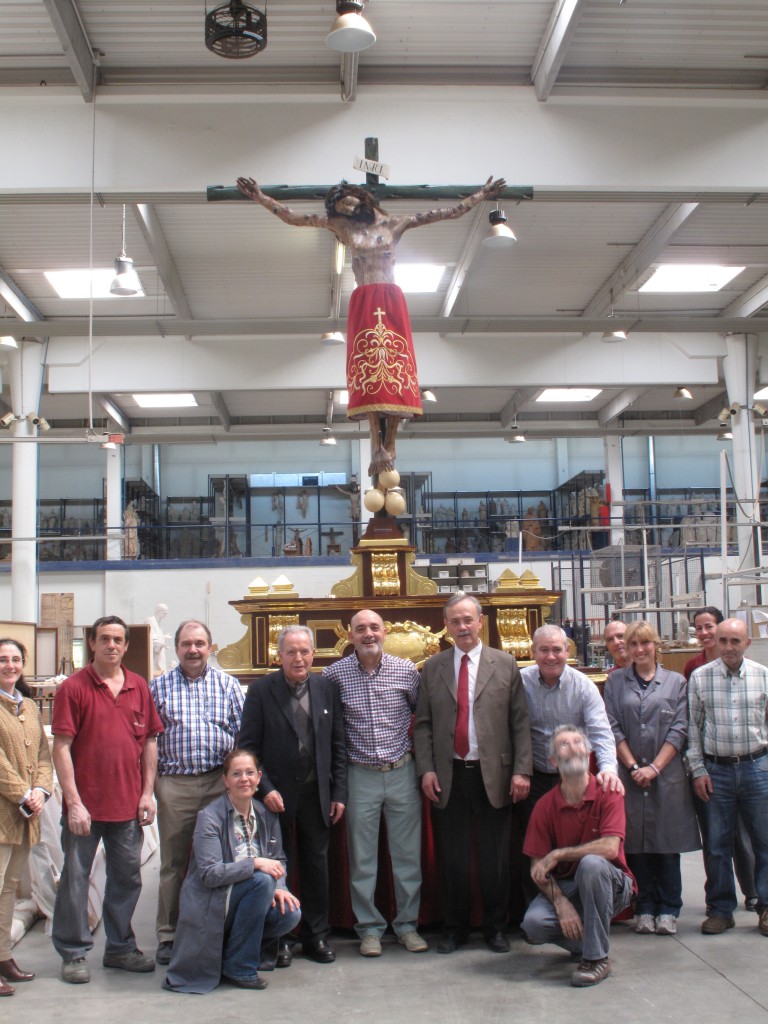The Christ of the Cathedral of Burgos is built with the objective of being able to be lowered to a recumbent position and therefore it has to be able to articulate in all its extremities, in addition to the hands and feet, to allow the set of movements that make this change of position possible. In the period in which the Christ was built, the only material available was leather, which, due to its condition of "living" material, gives these movements a reality and verisimilitude that make the figure of Christ move as if it were a real corpse.
The original material is of such a high quality and its tanning is so good that its elasticity and resistance properties remain almost unchanged to this day.

The replica reproduces as faithfully as possible the good work done by the craftsmen of more than 500 years ago. We start from different materials, because although the skins are sheepskins, the cures are completely different: in the original, vegetable tannins from the barks of different types of plants were used as tanning agents, and in the present one, metallic salts and vegetable tannins have been used.
In the original they proceeded to cut the skin of the shoulders from the skin of the rear joint of the animal, which allowed them to solve the reconstruction with a single seam. Nowadays the industrial quartering model has forced this part to be solved in a different, more complex way, being the only point in which the reproduction is not exactly identical to the original, in the other cases both the dimensions and the type of seams made and the nails with which the leather has been anchored to the wood are the same.
As for the filling of the joint spaces in the original was solved with wool fleece and in the replica we have selected synthetic wadding, to ensure better conservation and prevent the appearance of moths and other wool parasites, which could endanger the replica and the pieces located in its vicinity.
Also the nails with which it has been fixed are different from the original ones, made of stainless steel, to avoid the deterioration of the skin due to the oxidation of the iron with which the original ones are made.
Finally, the original thread was linen and in the replica, double-strand nylon thread has been used to prevent rotting, especially because the leather has been sewn and worked wet, to prevent breakage and allow the molding to the surfaces to be joined.
